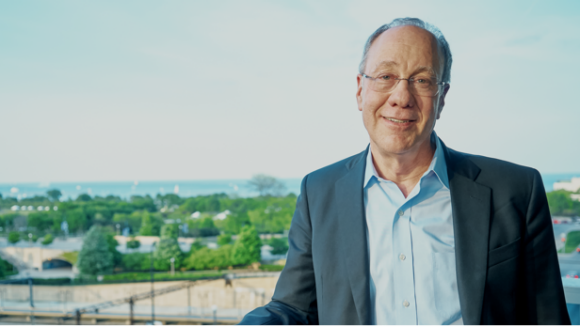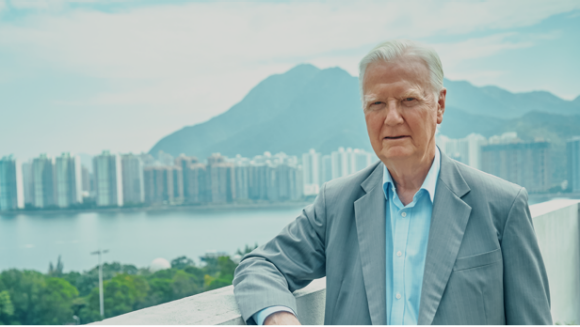An economist, a kidney surgeon and a school administrator walk into a room together. No, this is not a joke. It’s a snapshot from the Nobel ceremony in Stockholm in 2012. And these people are some of the guests of Alvin Roth, the founding father of market design. A strange mix? Possibly. But Roth is the economist who developed ways to match new doctors with hospitals, children with school districts and kidney donors with patients. And the list of applications of market design is growing steadily.
"Market design," Roth explains, "is an outward-facing part of economics." A market designer works out how to solve problems people face in their everyday lives. Charismatic and energetic, Roth acts as a physician examining a patient, prescribing medicine and following up with recommendations.

Alvin Roth
The Sveriges Riksbank Prize in Economic Sciences in Memory of Alfred Nobel, 2012
How designing a market changes our behavior
Are kidney donations and school choices even markets? Roth defines markets rather broadly. For him, a market is any kind of exchange and interaction where prices often don’t play a role. "If a Martian scientist landed on Earth with a grant from the Martian Science Foundation to study people, they would report that when we’re not alone, we talk all the time, we communicate and we transact, we coordinate, we compete," he jokes.
So market design is about understanding and facilitating that very human process of how we coordinate with other people.
The golden rule of matching markets
The golden rule of matching markets
The Nobel Laureate came to economics because he was driven by a desire to answer the questions that interested him. Roth became interested in game theory in graduate school at Stanford University, where he studied operations research under the supervision of Bob Wilson. Inspired by the papers of David Gale and Lloyd Shapley’s, Roth’s co-laureate, he studied different matching markets. In such markets, participants choose each other independently in order for the exchange to happen. “Not only do you have to choose, but you are also chosen” is the golden rule of matching markets. For instance, a college chooses who to admit from a pool of applicants, but the applicants also choose the college. A hospital chooses a doctor to offer a job to from a list of applicants who have also indicated that they want to work for that hospital.
How does the matching work?
How does the matching work?
One of the questions Roth began to work on related to the National Resident Matching Program (The Match), a clearing house designed to match young doctors with hospitals. He wrote a theoretical paper, in which he suggested that medical students who are romantically involved with each other would present a problem for The Match. "It’s enough to identify the hard problem for the theory paper,” he says. “But when The Match went into a crisis in the 1990s, I got a call asking me to direct the redesign and that was when I realized I was going to let this hard problem become my problem."
Proving theorems to bring students to jobs
Has this question inspired you?
Get the latest Nobel perspectives delivered to you.
The Match worked by having medical students rank their preferred hospital residency programs. "Similarly, the residency programs would rank the students. The way the clearing house works is by bringing those preferences together. A match is suggested that should have such good properties that everyone will want to accept it."
How did the medical students who were married couples break this job market? In short, they stopped accepting the matches. Roth was called in to redesign the rules of this malfunctioning marketplace. He relied on Gale and Shapley’s idea of stability of matches, while also extending the system to include the couples’ preferences. He allowed couples to safely state their preferences together, ensuring they wouldn’t be better off by trying to fool the system by applying separately.
Saving lives by applying economics
Designing a market for kidney exchange
Designing a market for kidney exchange
Watching Roth type on his computer while walking on his treadmill desk is a remarkable sight. And realizing that the result of this highly-focused economist’s laborious typing might actually save someone’s life changes your perception of his profession. How did he come to design a market for kidney exchange?
In his sunlit office on the Stanford campus, Roth explains that it happened by coincidence. At that time, Pittsburgh stood at the forefront of organ transplants in the United States, particularly of liver and kidneys. He needed a good example for his students, of a model where indivisible goods are traded without money.
"I would talk to them about the possibility of trading kidneys the way transplants were being done in Pittsburgh," Roth recalls. "People have two kidneys and if you’re healthy enough, you can remain healthy with just one kidney and so you can save someone’s life, someone you love, by giving them a kidney. But, because kidneys have to be matched, you can’t always give a kidney to the person you love. I might be in the same situation. But you could give a kidney to the person I love, and I could give a kidney to the person you love, and we’d save two lives."
Shortly after the first kidney exchange, Roth and his colleagues wrote a proposal to design a market for kidney exchange. Since then, their method has become a standard form of transplantation in the US.
Do rules make markets freer?
"When you think of a wheel that rotates freely, you don’t think of one that’s isolated in a vacuum, you think of a wheel that has an axle and well-oiled bearings. And for markets to work freely, they need rules that allow them to do so." For instance, The New York Stock Exchange’s opening hours set the rules of the market. The traders know exactly when the marketplace opens and when to start their daily rituals and in that sense, the rules of the market are in its design.
Coffee, talking and other rituals
In the marketplace, as well as in real life, rules are often based on rituals. These unwritten agreements bring humans together to exchange and communicate, giving us a sense of community and belonging. For Roth, one ritual rises to the level of a rule. Every morning at home he drinks his first coffee with his wife Emily. "Coffee is a metaphor for talking to each other," says the laureate, sipping from his cup.
Every Tuesday at lunch, Roth’s colleagues and students gather for a coffee. They take a stroll down to one of the lawns and occupy a picnic table. The collaborators discuss the latest research results, the progress they have made, the problems that arise, and the challenges that will follow. These weekly coffee rituals create a safe, non-competitive, familial environment. Similar to the way a market designer’s drafting of rules makes it safe for the participants to reveal their preferences, Roth designed these coffee table discussions as a platform for exchange, a marketplace of ideas, where students are encouraged to reveal their thoughts openly.
Has this question inspired you?
Get the latest Nobel perspectives delivered to you.
Finding a good match - a lifelong challenge
Finding a good match - a lifelong challenge
At the time when market design had only started to distinguish itself as a separate field in economics, Roth taught a course at Harvard with his colleague and friend Paul Milgrom. The two professors have very distinct teaching styles. "Al is extremely articulate, a wonderful lecturer,” Milgrom says with a smile. “He keeps things really simple. He changed the way I teach."
Small models are situated in the real world
Why do countries have to find better ways to grow?
Hear Michael Spence's view on how countries can grow sustainably while having a long-lasting positive impact.
Finding a good match can be a lifelong challenge. Roth found a way to fix floundering matching markets and expand our understanding of what markets really are. He uses the same approach with his students by telling them to choose something they enjoy doing. "I tell them that a very big part of their responsibility is to find something that they really enjoy working on, that they can do something that they aspire to, but that they like the day-to-day work," he says.
Roth smiles as he considers the future of the field he established.
Economics will evolve, the economy will evolve. There will be different kinds of markets to study. And we pass on the tradition. Trying to change it a little, to transform it while it is in our hands, but then it gets passed on to younger economists.
What does Roth’s work mean for us?
More Nobel Laureate stories
Has this question inspired you?
Get the latest Nobel Perspectives updates delivered to you.



